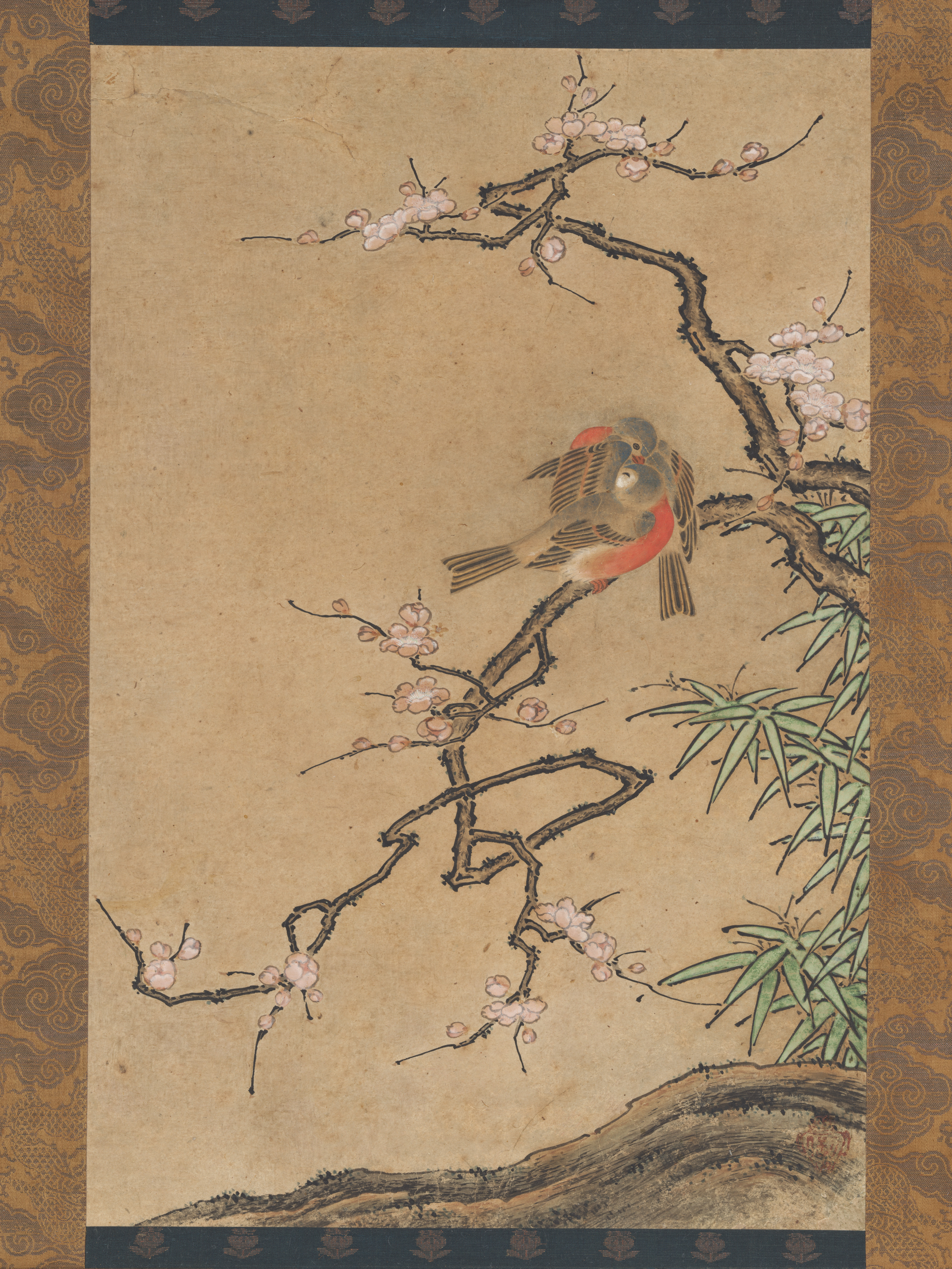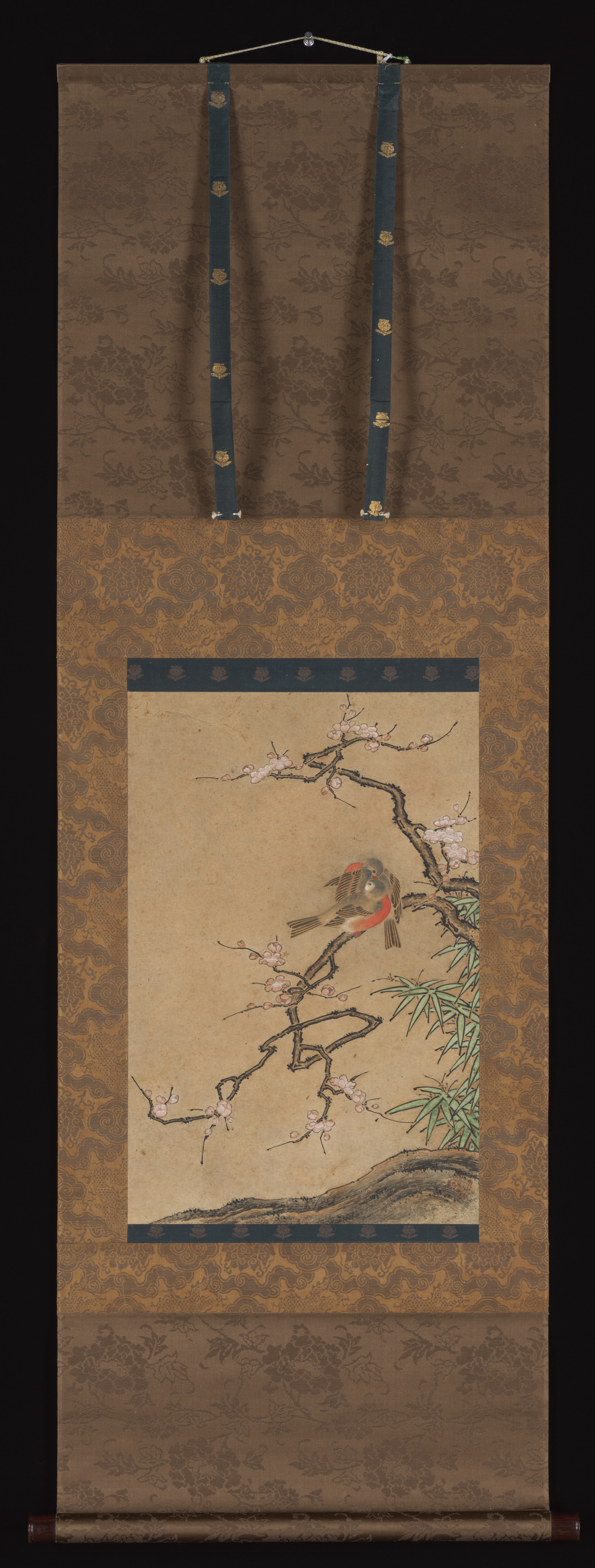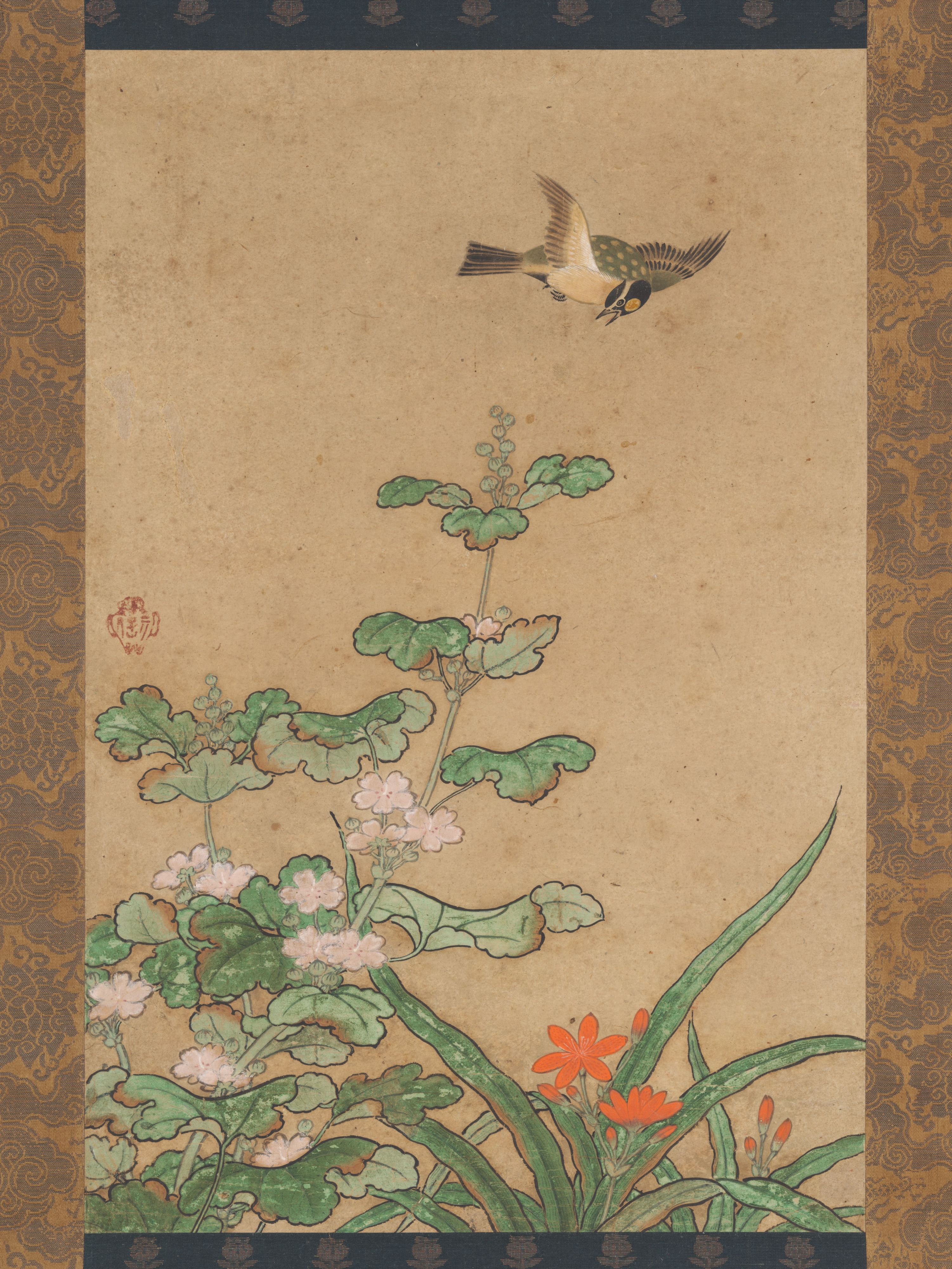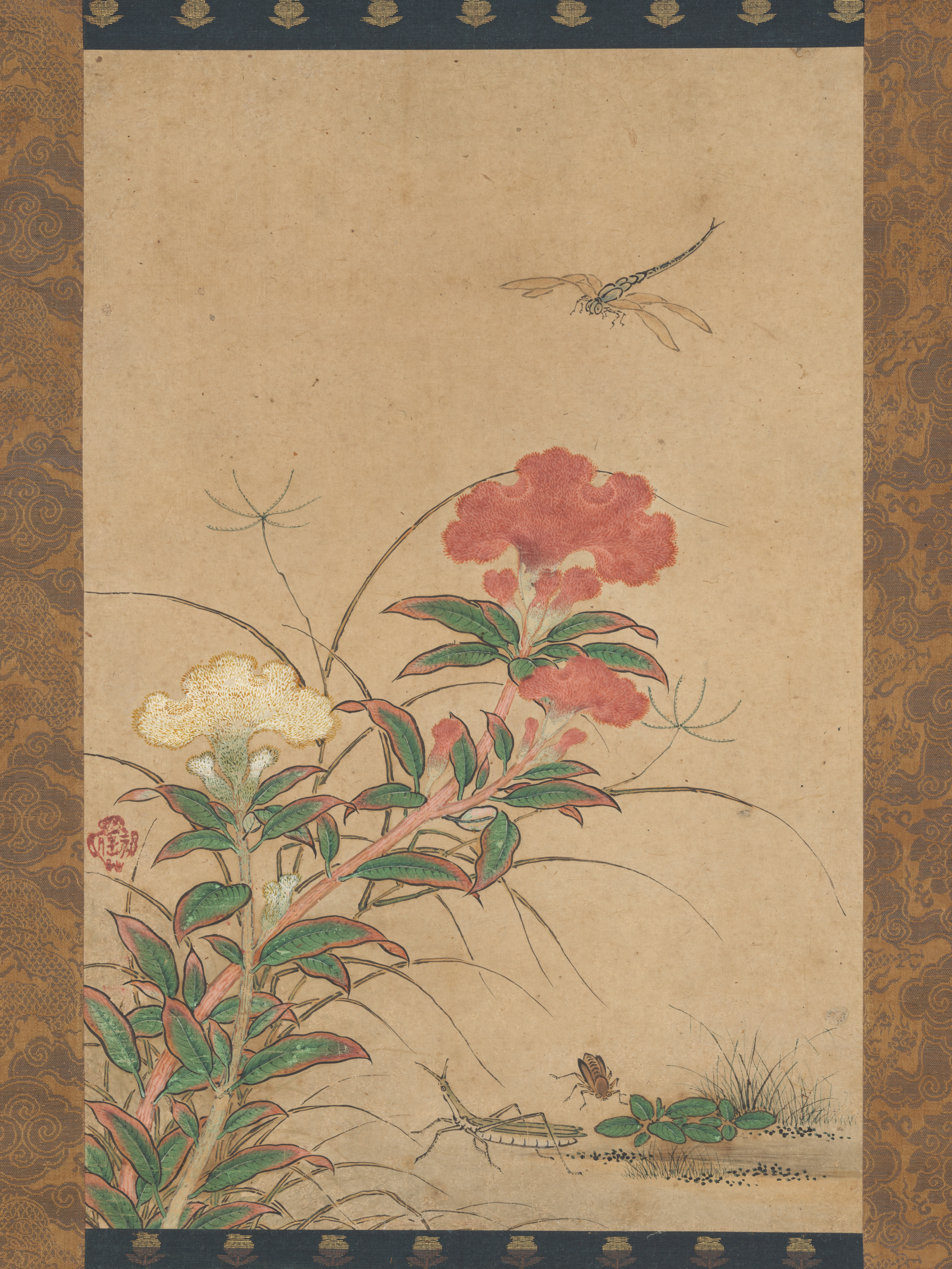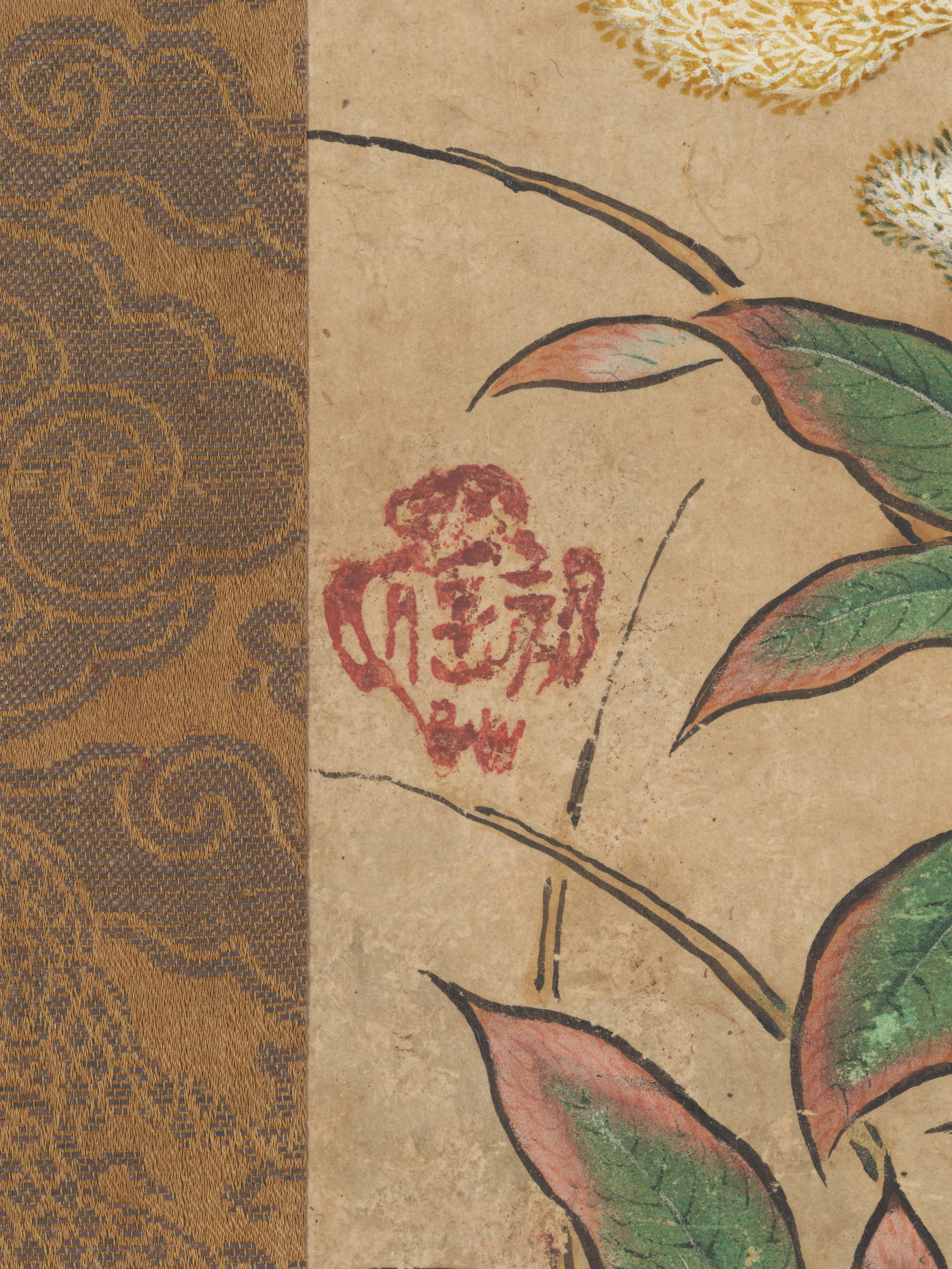Birds and Flowers
Traditionally attributed to Kano Motonobu Japanese
Not on view
These three paintings, a set that may have originally included a fourth, represent flowers, birds, and insects of the seasons. They also represent the early Kano-school approach to the flower-and-bird genre influenced in part by Chinese paintings. Apart from the floral subjects, landscape elements are kept to a minimum, with blank space as the primary background.
The first depicts plum blossoms with bamboo and a billing pair of robins (spring), the second what appears to be hibiscus and lily with a jay(?) hovering overhead (summer), the third, plumed coxcomb keitō, with a praying mantis, a cricket, and a dragonfly (autumn). Summer and autumn bear the red cauldron-shaped "Motonobu" seal—of which several versions exist—associated with Kano Motonobu, official painter to the Ashikaga shoguns. While impressed with the seal of the master, these works might have been painted by his son Shōei (1519–1592).
Motonobu, the second in a long line of Kano painters, was an influential and skillful artist whose patrons included members of the military elite, Zen Buddhist monasteries, and court nobles. He is credited with combining Zen-inspired ink painting techniques with aspects of indigenous Japanese styles (yamato-e) to create the strong and decorative style that became the model for Kano-school artists and brought him fame and success during his own lifetime.
This image cannot be enlarged, viewed at full screen, or downloaded.
This artwork is meant to be viewed from right to left. Scroll left to view more.


